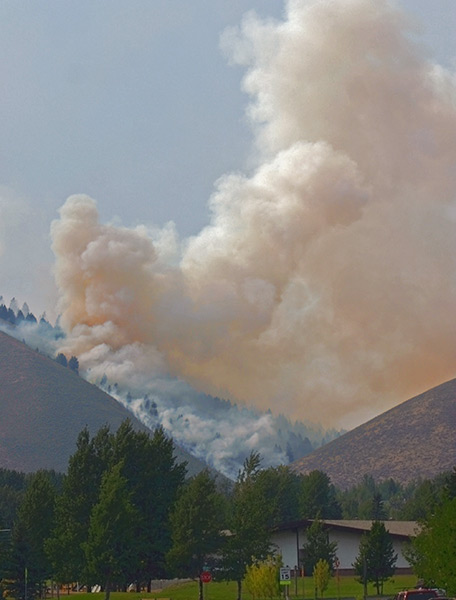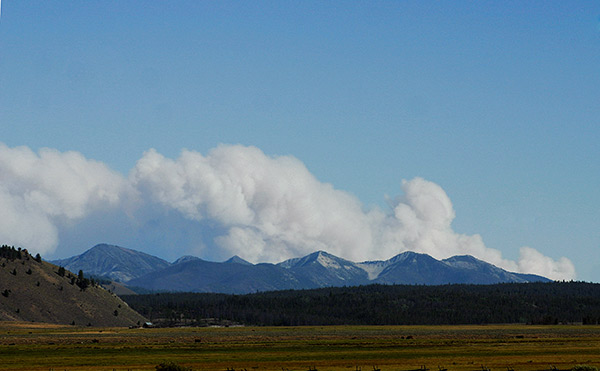Story by Idaho Fish and Game-
Multi-agency effort nets three grizzlies
Three grizzly bears that had been raising havoc in the Island Park Ranger District of the Caribou-Targhee National Forest have been captured.
No humans were injured in the process, nor were any of the bears. But these bears will never be able to return to the wild.
The bears were a family – a 5-year-old female, first captured two summers ago in Harriman State Park, and her two cubs of this year. Since her first capture after forcing her way into a trash compactor at the state park, the female was given the number 502, and she has been flirting with trouble.
After two relocations and some apple tree raiding outside Ashton, she apparently was passing on her marauding lifestyle to her cubs. Raiding a vacant tent near Moose Creek, just off the Big Springs loop on the evening of August 16, was the final straw.
The area was closed by U.S. Forest Service officials, allowing biologists and conservation officers to set up traps to capture the troublesome threesome before they got into any more trouble.
Because three bears were involved, wildlife officials needed a variety of trapping strategies. They used large culvert traps and cable snares, as well as CO2 dart rifles. In addition to odiferous baits, the bears themselves were used as lures.
The first cub was caught in a culvert trap on Saturday. The trappers made it comfortable and then used it to draw the mother bear closer. Saturday evening, she approached, keeping an eye on the cub in the large culvert trap; she failed to notice a cable leg-hold snare.
Once caught, biologists sedated her and moved her to another culvert trap, where she too was made comfortable and used to lure the remaining cub. Hoping the free cub might seek out its mother, the trap was left open just enough to let the cub crawl in.
Regional wildlife manager Daryl Meints lay waiting the brush just yards away with the trigger rope. As a precaution, senior conservation officer Charlie Anderson waited nearby armed with a 12 gauge shotgun loaded with slugs.
Because the female bear had been tranquilized, biologists hoped the cub would crawl into the trap before she woke up. But all the commotion had made the cub wary, and he would not enter the trap. And then the mother bear began to come out of her drug induced slumber.
Craig Whitman of the Interagency Grizzly Bear Committee moved in with a dart rifle. The startled cub climbed into a small tree, where Whitman easily darted it. He secured the cub with a catch-pole to keep it from being injured in a fall. The cub was put in a culvert trap, sedated and examined.
While their future is uncertain, these bears won’t return to the wild. The female had learned to associate humans with food, and she was passing that on to her cubs. That and the loss of almost any fear of humans mean they can’t be released.
The bears were put in separate traps for transport. The female will go to the College of Natural Resources Bear Research Center at Washington State University in Pullman, Wash. But the facility can’t take all three bears. Fish and Game continues to look for another facility to send the cubs.
“If an appropriate facility cannot be found then the cubs may have to be euthanized,” Fish and Game regional wildlife biologist Lauri Hanuska-Brown said.
Bears naturally seek out things that smell interesting or taste good, and if that leads to contact with people, the bears get in trouble. Every trash can and ice chest left out for these bears was another step closer to their removal. Fish and Game asks that campers and homeowners keep ice chests, dog food or any other food item or container secured inside cars, homes, or campers while in bear country.
To help keep bears out of such trouble, the Caribou-Targhee in June extended bear-safe food storage requirements to national forest areas where the grizzly bear have expanded. Details of the storage requirements are available at Forest Service offices.
Idaho Fish and Game, Forest Service, the Grizzly Bear Study Team, and the Fremont County Sheriff’s office cooperated on the trapping effort.
post 1476














